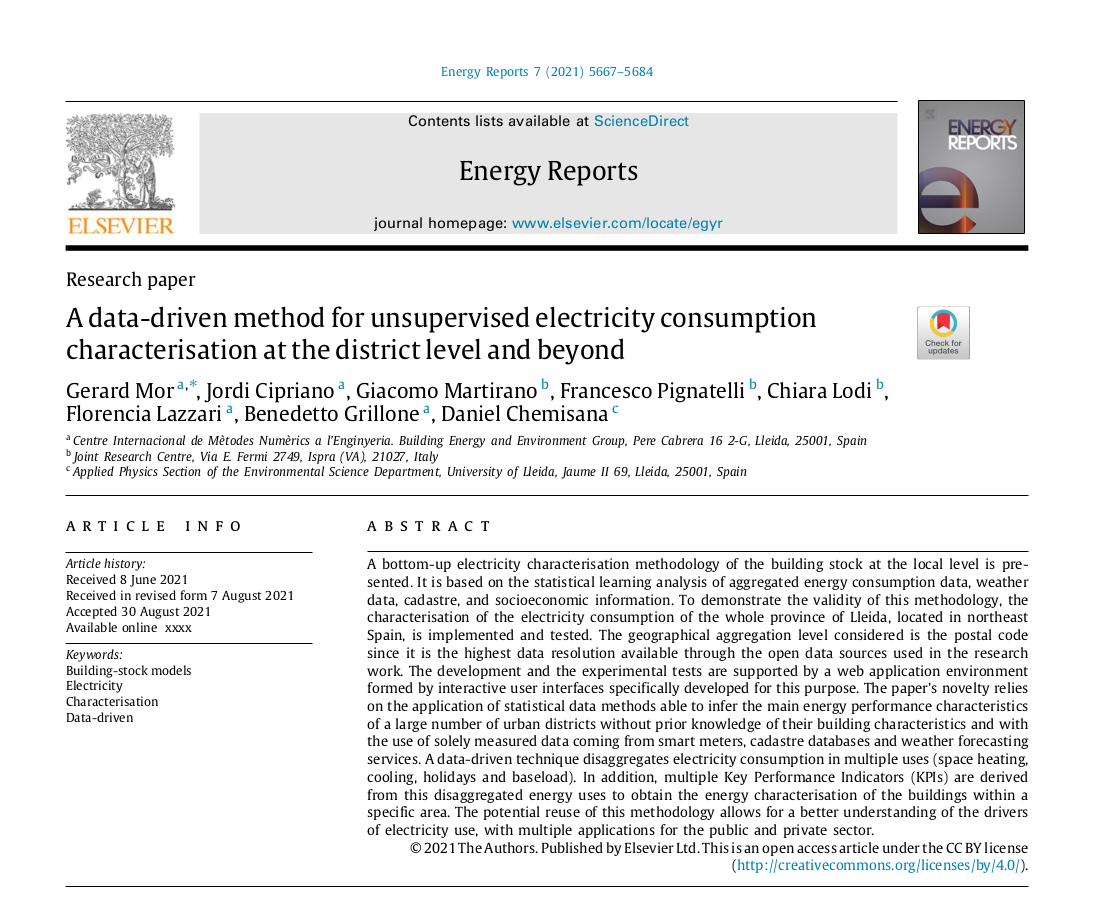Use of Digital Twin Weather extremes for fine-tuning energy prediction
Gerard Mor Martinez
Míriam Méndez Serrano
Presentation of the DestinE Use Case
April 12th, 2024 10:00

Statistical learning methods for energy assessment in buildings with applications at different geographic levels
- Background -
Electricity load characterization of districts


Supported by:
ELISE (ISA2 project) and Joint Research Center (Ispra)
Journal: Energy Reports
JIF (2020): 6.870 - Q1

Goals
To design and implement a visual tool that characterises energy consumption at a local scale (postal code) based on forecasted weather data
- Accounting for different conditions:
- Building characteristics
- Activity sectors
- Weather
- Socio-demographic
- Using interoperable datasets:
- INSPIRE-harmonised datasets for cadastral data
- Weather datasets coming from DEDL
- Geographical scope: Catalonia (a region of Spain)

Data inputs (2018-2023)
- Aggregated hourly electricity consumption
- By tariff
- By similar-to-district geographical level (Spain: postal code)
- By type of usages (Industrial, residential, tertiary)
- Indexed prices for PVPC energy tariff
- Building information (INSPIRE harmonised)
- Typology
- Built area
- Year of construction
- Weather data
- ERA5Land (historical data)
- Digital Twin extreme weather forecast

Optional data inputs
- Aggregated socio-economical information
- Annual net incomes per household
- Incomes sources (salary, pension, benefits,...)
- Gini index (inequality)
- Population age
- People per household
- Population
Consumption data Socio-economic data Buildings information
Postal code ~ Census tract > Building level
Aggregation

Energy characterisation method
Once datasets are harmonised to postal code level:
- Data cleaning
- Inference of usage patterns
- Modelling the electricity consumption using ML techniques
- Outcomes of disaggregate consumption
- Baseload
- Space heating
- Space cooling
- Calculate KPIs
- Use the model to predict multiple weather scenarios

Conclusions
This methodology will be:
- Capable to infer the drivers of consumption in the building sector and their occupants.
- Predict electricity consumption of large regions using extreme weather forecast.
- Demonstrates the potential of using DT, open data and INSPIRE harmonised datasets
Text
Thanks for your attention

Use of Digital Twin Weather extremes for fine-tuning energy prediction
Destination Earth presentation
By CIMNE BEE Group
Destination Earth presentation
- 117



